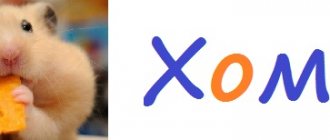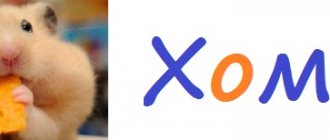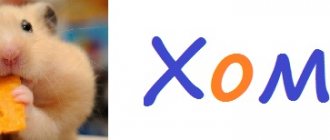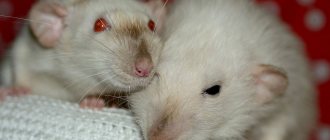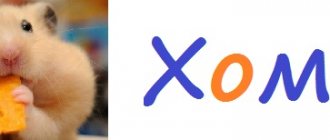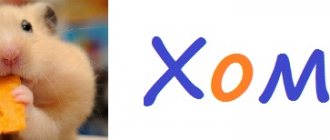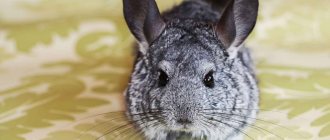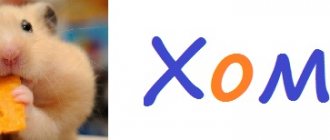One of the exotic types of earning money, which allows you to get a good income with small investments, is chinchilla breeding. They are valued for their valuable fur, which has the ability to resist moisture, but in most cases today they are not bred on an industrial scale, requiring the killing of animals, but are sold live in small batches for keeping as pets, which makes such a mini fur farm more attractive for those who wants to start a profitable small business.
Chinchilla breeding as a business
CHINCHILLA RECIPES
RECIPES OF CHINCHILLA DISHES
Treasure hunting shish kebab
3-year-old chinchilla, 400 g each, 3 large onions, soak for 30 minutes, marinate in wine for 30 minutes. With bay leaf. Thread onto a skewer and fry for 40 minutes.
Chinchilla with potatoes, treasure hunter style
Line the bottom of the pan with chinchilla meat. Place a layer of onions on top. The top layer is potatoes. Pour in 1 cm of sunflower oil, bay leaf, spices to taste. Cover with a lid and simmer for 40 minutes.
This text is an introductory fragment.
Continuation on liters
Read also
CHARACTERISTICS OF CHINCHILLA FUR
CHARACTERISTICS OF CHINCHILLA FUR Since ancient times, the right to wear chinchilla clothes belonged only to the royal family; fur was a sign of wealth and high social status. The desire to wear this fur at the end of the 19th century became the reason for almost universal
CHINCHILLA BUILD
BUILD OF A CHINCHILLA We call the general shape of a chinchilla's body. Ideally, all newly purchased chinchillas, as well as animals intended for breeding, should undergo a conformation assessment. When assessing a chinchilla's build, pay attention to three parts of the body: the head,
ADVICE OF THE PRINCE OF TRADE DIGGERS YURI KHARCHUK ON KEEPING A CHINCHILLA
ADVICE OF THE PRINCE OF TRADE DIGGERS YURI KHARCHUK ON KEEPING A CHINCHILLA We offer breeding of indoor animals – chinchillas. The most expensive fur in the world! The size is 2-3 times smaller than a rabbit, and they eat almost everything that rabbits eat, but an order of magnitude smaller: potatoes, vegetables, grain, herbs, hay,
Camping recipes
Recipes for camping meals Weekend hikes are available to everyone. As a rule, tourists participate in them with their whole family. Such a hike is a holiday, especially for children. Therefore, from the point of view of nutrition, tourists try to make their diet festive, especially since in such
Recipes
Recipes Carp in beer in German 0.5 kg carp, 20 g fat, 10 g flour, 20 g gingerbread, 10 g onions, 40 g beer, 3 cloves, salt. Fillet the fish, remove the bones, cut into portions and simmer until ready. From flour and sautéed onions dipped in beer, pounded gingerbread and
Secrets of delicious dishes
Secrets of delicious dishes So that leaf salad does not lose its taste. Lettuce should be washed under running cold water, then let the water drain and dry the salad with a towel. Save vitamins in lettuce. To preserve the vitamins that salad leaves are rich in, cut them
Snack Recipes
Appetizer recipes Verkhovazhski-style ham with green beans For preparation you will need: 750 g bean pods, 750 g raw, thinly sliced potatoes, 150 g unsmoked ham, 3 chicken eggs, 1/4 l fresh milk, pepper, salt, lemon juice, 2 Art. spoons of grated
Source
Chinchilla breeding business: profitable or not
Today, chinchilla breeding as a home business is a type of entrepreneurship that has no competitors. Many farmers are interested in raising chinchillas; they ask questions: is it profitable to breed chinchillas, what is needed for business, where to start planning, how to organize the sale of products. Answers to these questions, as well as reviews from experienced entrepreneurs, can be found in this article.
How many chinchillas should you keep?
As a rule, it is recommended to keep not one, but a pair of chinchillas, since in nature they are not solitary animals and live in a social environment. Playing and sleeping together and snuggling are common activities for them.
If you do not plan to breed them, it is recommended to keep a pair of chinchillas of the same sex. However, getting two unfamiliar adult chinchillas to interact is not an easy task, so it will be better if you get a young pair of about the same age.
Keeping a pair of chinchillas will also help you spend less time keeping them active and lively, as they will always be busy playing and interacting with each other. Providing appropriate toys in their crate and also try hiding treats for them to look for will also help keep them fit and engaged in their environment.
Breeding chinchillas: let's weigh the pros and cons
Advantages of chinchilla business
- This is a relatively free niche in the Russian business sector.
- The demand for our products is constantly growing.
- Good profitability: the cost of maintaining an animal for up to 2 months does not exceed 1 thousand rubles, and the income from each individual is 15 thousand rubles.
- You can start from scratch with minimal effort and without investing a lot of money.
Farm maintenance costs
- Purchase of rodents: at least 10 females and a couple of males (100-150 thousand rubles).
- Home improvement: purchasing equipment (cages and much more can be made with your own hands).
- Food expenses: on average 10 thousand rubles per year per head.
- Electricity costs: light, air conditioning, convector.
- Taxes to the state, state duty for business registration.
- Advertising (may not be required if there are established sales channels).
Comparison with other types of fur-bearing animals
Chinchillas reproduce worse than rabbits and produce no more than 3 cubs in one litter. But chinchilla skin is much more expensive than rabbit skin, because it surpasses it in quality and beauty.
Chinchilla fur is not as durable as mink fur, but a mink coat costs less because it is inferior to a chinchilla coat in several respects: softness, lightness and color range.
Possible risks
- Diseases. The risk of developing the disease in the entire population is very low, since chinchillas have good health and are naturally hardy animals. Serious deficiencies in the care and feeding of pets can lead to an epidemic.
- Lack of distribution channels. This problem will not arise if you think everything through in advance.
How to organize a business
Purchase of animals and equipment
To start breeding chinchillas at home, you need to purchase the animals themselves and arrange a place for keeping them. For this you will need:
- Cages: 1 cage for 2 rodents, it is recommended to place cages in 2 rows of 6 pieces each, minimum room area – 18 sq.m.
- Drinkers, feeders, hay bowls: nipple drinkers and hanging feeders protect food and water well from contamination.
- Houses and beds: animals need a place for privacy; the size of the bed should not be less than 12 cm in width.
- Filling: Sawdust, shavings or hay.
- Bathing suits and sand: you cannot skimp on sand; the quality of the fur will suffer as a result.
- Toys and exercise equipment for teeth: grinding teeth is vital for rodents; the ideal option is a mineral stone.
- Cleaning and disinfection products: non-toxic specialized products and ultraviolet lamp.
- Convectors: maintaining optimal humidity levels.
- 60 W lamps: per 1 sq.m. 1 lamp required.
- Air conditioning and heater: temperature control.
- Feed and hay.
Menu of a pregnant female
A pregnant chinchilla may eat a little more than usual. This is normal, but you should not overfeed her, otherwise the female’s health will suffer greatly from obesity. Nutrition during this period changes slightly. Veterinarians advise including in the diet of chinchillas:
- sprouted grain;
- food of animal origin (eggs, milk, cottage cheese);
- more protein due to an increase in the proportion of grains;
- apple;
- bee bread 1-2 balls per day;
- alfalfa, strawberry leaves, calendula flowers;
- rosehip, hawthorn;
- flax seeds;
- cereals;
- vitamins and mineral supplements;
- calcium: a quarter tablet of calcium gluconate or 1 tablet of Excel Calcium per day.
Calcium deficiency is dangerous for pregnant females: it causes eclampsia, which without treatment leads to the death of the animal. You need to exclude mint, thyme and lemon balm from your diet.
Block: 6/7 | Number of characters: 817
Business plan
A business plan will help you keep everything under control and get the maximum benefit from your new venture.
First, you should start calculating potential profits: from the amount of expected income (calculated by predicting the receipt of offspring), subtract the amount of estimated costs for the preparation and monthly maintenance of rodents.
Approximate costs of maintaining a livestock of 50 chinchillas:
- Chinchillas - 100-150 thousand rubles.
- Cages – 2 thousand rubles X 25 (2 animals per cage) = 50 thousand rubles.
- Feed – 1,000 – 1,500 rubles per day.
- Other expenses (electricity, taxes, veterinary care, advertising, etc.) – 20 – 30 thousand rubles.
- The income from 50 chinchillas is easy to calculate: offspring of 300 puppies per year will bring about 1 million rubles.
When drawing up a business plan, you should take into account that breeding animals cost about $100, which is 2 times more expensive than pets, and the cost of a skin is approximately $80.
Sales of products
Sales channels
Sales of products are possible in three directions:
- breeding animals to other farms;
- skins in studios and factories, as well as at auctions;
- dietary meat can be sold by advertisement or delivered to restaurants;
- small individuals to pet stores.
Beginning entrepreneurs and farmers whose production is constantly growing may need advertising. For these purposes you can use:
Do chinchillas eat meat?
Chinchilla meat is eaten, it is dietary and medicinal. It is recommended to be used for cancer, sclerosis and tuberculosis.
Carcasses are sold after the animal is slaughtered for fur.
It is not profitable to specifically raise animals for meat, because even a novice farmer knows how much a rodent weighs—at best, the animal’s weight reaches 1 kg.
Chinchilla weight chart
| Days | Average weight of a chinchilla in grams according to the M.P. table. Pavlova | Average weight in grams Farm table |
| 41 | 49 | |
| 5 | 49 | 59 |
| 10 | 65 | 73 |
| 15 | 72 | 86 |
| 20 | 84 | 101 |
| 25 | 97 | 116 |
| 30 | 114 | 136 |
| 35 | 128 | 154 |
| 40 | 143 | 172 |
| 45 | 158 | 190 |
| 50 | 179 | 215 |
| 55 | 188 | 226 |
| 60 | 201 | 242 |
| 90 | 272 | 327 |
| 120 | 321 | 385 |
| 150 | 362 | 435 |
| 180 | 396 | 475 |
| 210 | 411 | 493 |
| 240 | 422 | 506 |
| 270 | 440 | 528 |
| Adults 505 | Adults 606 |
Reviews from experienced entrepreneurs
Daria, Pskov region
My parents are breeding chinchillas. They started with a small number of individuals, but then they realized that these animals are very profitable, now they have more than 100 heads. The farm is located right on the plot in a special extension. To maintain the heat at least 18 degrees, a heater was installed; it doesn’t turn on that much. Once they forgot to turn it on, 6 chinchillas died. Animals are not fussy about caring for them, but they need to be fed and watered every day and cleaned regularly. The animals eat little and take up minimal space. Parents sell chinchillas to pet stores and sell them online as pets, since they are not involved in skinning.
Fedor, Saratov
When I decided to start farming, I was looking for a business in which I didn’t need to invest a lot right away. Among my friends who breed animals, there is a chinchilla specialist, he explained everything, and it turned out that chinchillas are what I need. I don’t slaughter them for fur; I mainly sell breeding specimens to beginning farmers in Russia and neighboring countries, and sell the rest to a pet store. I am glad that I chose such a profitable path in farming.
Nikolay, Moscow region
I am engaged in raising animals for their skins. The chinchilla farm paid for itself in a year, but I made the cages myself, and the females consistently gave birth to 2-3 cubs. In order to sell the skins to the atelier, I had to master the dressing technology, but now the distribution channel is established, I don’t advertise, all the products of the chinchilla business are torn off in the atelier.
Source
Treats for chinchillas or what they like most
Every owner pampers his chinchilla with treats, because the animal loves them most. As soon as you give a piece of treat to the chinchilla, she immediately transforms, becomes cheerful and her whole body is in anticipation. The most important thing is not to overfeed your pet with treats, otherwise he may refuse the main food or diseases will begin to develop, because the animal is very fragile in terms of health.
Treats for chinchillas play a very important role in taming; without them, it is very difficult to accustom an animal to your hands. At each lesson, the chinchilla is given a small piece of the treat that she likes most if she follows the commands correctly. Treats reinforce correct actions, and the absence of treats is used to punish the chinchilla if he did something wrong.
Taming stages
Conventionally, the process of taming a chinchilla, both adult and young, can be divided into several main steps.
Adaptation
In the first few days, the pet must get used to the cage, the appearance of the owner, and the surrounding smells. During the habituation period, it is recommended to open the cage only to fill the feeder and drinker. After which it is better to leave immediately.
Treat with tasty treats
On a subconscious level, a chinchilla, like any other animal, associates food with something pleasant. Therefore, the taming process will not be complete without treats. It is better to use dried fruits to treat a young chinchilla. And for an older individual, fresh fruits and vegetables or nuts are suitable. The animal will especially like the following treats:
- apple;
- banana;
- strawberry;
- carrot;
- cashew nuts;
- hazelnut.
All you have to do is insert your open palm into the cage with a piece of the chosen treat. Then you just have to wait until the pet looks around and carefully approaches your hand. The first time, the chinchilla will most likely quickly grab the treat and run for cover. Subsequently, the pet will begin to feast directly from the palm of your hand.
Communication
When the chinchilla stops being afraid of its owner and begins to confidently and calmly eat from his hand, you can try to gently stroke the fluffy under the neck. This should be done with the index finger of an open palm, carefully, with smooth movements. If the chinchilla does not run away, you can move on to stroking the face and behind the ears.
If the pet still refuses tactile contact, runs away, chatters its teeth displeasedly or snorts, it is better to leave it alone. After 2-3 days, you can try stroking again. The main thing is not to force the fluffy one to do anything, otherwise the previously achieved results will go down the drain.
Hand Taming
When the chinchilla began to run up to the cage door without hesitation at the sight of the owner and calmly feast on his hand, you can move on to the most important stage - taming. The first step is to gently place your open hand under your pet while he feasts on the treat.
If it works, you need to try to hold the pet for as long as possible, but do not pull it out of the cage. You need to wait until the fluffy starts to sit on your hand. This will happen 3-4 times. Then you can smoothly try to pull the pet sitting in your palm out of the cage.
To keep a chinchilla, you need to immediately buy a cage with a spacious exit through which the owner’s palm can easily pass with an adult animal sitting on it. Otherwise, you will have to squeeze the pet and pull it out in unnatural positions. This attitude will greatly slow down the taming process.
If everything went well, you will need to briefly hold the chinchilla in your arms every day. This will help strengthen the psycho-emotional connection with your pet. Subsequently, it will be possible to increase the duration of contacts, and also allow the animal to run around the room or on itself, look in your bosom, or sit on your shoulder.
Training
When the chinchilla has fully adapted to its new place of residence and happily goes into the owner’s arms, you can start training the animal. You can’t count on performing complex tricks, but the fluffy can easily teach simple commands. It is better to start training at the age of 3-4 months, however, older animals can also be trained. A chinchilla can be taught the following commands:
- Walk/home . These words should signal to the pet that it is time to leave or, conversely, return to the cage. In order for the chinchilla to clearly understand the command, you need to lure it out of the cage with a treat and clearly repeat the word “walk” 3-4 times. Also, when sending your pet back, you need to say the word “home”. After 2-3 weeks of classes, having heard these words, the fluffy will perform the corresponding action.
- You can't/to me . Chinchillas are very curious animals, so while walking around the apartment they sniff and taste all the objects that come their way. You can wean them off using the “no” command. It must be said as soon as the animal is ready to chew something. To reinforce the command, you can move the chinchilla's face away from the forbidden object with your palm. After this, it will be appropriate to say the command “come to me”, then the fluffy will immediately switch from his antics to the owner and run up to him.
- Kiss . To train this skill, the owner needs to put the pet’s favorite treat on his shoulder and wait for the animal to come running for the treat. As soon as the chinchilla is on your shoulder, you need to turn your head towards it and say the word “kiss”. On an instinctive level, the fluffy will begin to sniff the owner’s face, as if kissing him. Soon, having heard the appropriate command, the chinchilla will begin to “kiss” itself.
These are just a few basic commands that you can teach your pet. In fact, chinchillas are quite smart, so the list of skills will be significantly expanded over time. For example, these rodents easily master tricks such as standing on their hind legs, carrying toys in their teeth, and jumping over obstacles.
What treats does a chinchilla like?
Let's start with the treats that almost all chinchilla owners give and they are recognized as the safest:
- Dried apple. A very popular delicacy, due to the fact that it is easy to buy or even make with your own hands, and the price of apples is very low. Dried apples are constantly used during training because they are low-calorie and it is difficult to overfeed the animal with them.
- Dried carrots. Has the same benefits as an apple. It's cheap in stores and you can make it yourself. The main condition for dried carrots is that they are stored properly and do not harbor moths or other nasty things. Carrots should be bought in small packages or prepared for 1-2 weeks; long-term storage will cause harmful parasites to appear, especially if the humidity in your room is above 60-70%.
- Tree branches. It’s hard to call it a delicacy, because chinchillas just love to chew on everything, and the twigs also provide a certain taste. Sticks can be given in unlimited quantities; the chinchilla will never overeat them, but will only chew them to grind down their teeth. Tree twigs are given only in dry form; you can buy them at any pet store or make them yourself.
- Berries. Strawberries, blueberries and wild strawberries. Dried and in limited quantities.
- Dried rosehip and hawthorn. This delicacy also helps boost the animal’s immunity. It does not need to be given constantly; it is best to feed it when the season changes. Give in small portions 1-2 times a week.
- Dried greens Lettuce, spinach, clover, celery, chicory, sorrel, nettle, birch, apple and pear leaves.
Now we will look at another list of treats that chinchillas love, but they are harmful or deadly to them.
Prohibited foods for chinchillas
There are a lot of foods that are dangerous for the sensitive digestion of fluffies. Harmful additives can be divided into several categories.
Table No. 4. Prohibited products for rodents.
| Products from the dinner table | Vegetables fruits | Grass |
| buns and bread; | raw potatoes; | fern; |
| meat, raw and cooked; | freshly cut cabbage leaves; | dope; |
| honey; | cucumbers; | horsetail; |
| cheese; | beet; | raven eye; |
| eggs; | persimmon; | rushwort; |
| kefir, yogurt; | citrus. | cornflower; |
| pasta; | black nightshade; | |
| mushrooms; | poisonous hellebore; | |
| hamburgers, fries, chips. | Buttercup is pungent. |
Feeding nuts quickly leads to obesity, so they are given in minimal quantities
Important! Chinchillas often die even from the most loving owners. This is often due to incorrect or poor quality feeding. Therefore, it is important to make up your pet’s diet only from high-quality, safe, healthy products.
It is not at all difficult to instill proper nutrition in a chinchilla, but this is a mandatory part of keeping a pet. He will be energetic and happy only if the food is balanced. To do this, it is important to correctly observe the proportions of grain feed, herbs, and favorite sweets.
Block: 6/6 | Number of characters: 1172
Can be given in limited quantities
- Sunflower seeds. A wonderful treat that chinchillas love. It is not only tasty, but also beneficial for their fur; it becomes thicker and shinier due to the oils contained in sunflower seeds. They can be given, but in very limited quantities. They are dangerous because of their high calorie content, 100 grams of seeds contain 580 calories, and in grains this figure is at the level of 150-250 calories per 100 grams. Chinchillas have a weak liver, so it is very difficult to digest seeds, so do not pamper your pet more than 1-2 times a week. They can also be excluded from the diet to ensure that liver problems do not arise.
- Nuts. For chinchillas, nuts are a heavenly pleasure; they almost start singing when they see delicious nuts. Like seeds, they are harmful due to the huge amount of calories, about 600 calories in almonds and walnuts per 100 gram serving. You should give nuts rarely or exclude them from the diet.
- Legumes. Quite a dangerous food because it causes gas formation in the stomach. Chinchillas have a poorly developed digestive system and it is extremely difficult for them to remove gases, so if you regularly feed them legumes, then after a while the animal will become bloated. This disease is quite dangerous and if not cured in time, the animal will die.
- Dried fruits . (Raisins, dried apricots, etc.) Chinchillas, of course, love dried fruits because they are very tasty and nutritious. They can be given in limited quantities only 1-2 times a week, but they cannot be made the main treats. In addition to gastrointestinal disorders, they may have metabolic disorders or liver disease. Therefore, it is best to give dried fruits in very small portions so as not to harm your animal.
- Juicy food. Juicy foods include all raw foods, for example, apples, tomatoes, raw grass, berries. Chinchillas love them very much, but they are harmful to them. Due to the juicy food, they form gases that they are not able to remove and bloating occurs, which is very dangerous. It is better not to give juicy food at all, but if
basic information
Chinchillas are relatively easy to care for on a daily basis, are timid by nature and can become very tame. They are quite delicate creatures and must be handled with care, so they are not suitable for very young children.
Chinchillas are nocturnal and tend to sleep during the day, gradually becoming more active in the evening and at night, so they make good pets for people who work during the day and only come home in the evening.
Never feed your chinchilla
- Trees from the list below: Remember the names of these trees and do not give them to your chinchilla: - Resinous and coniferous trees. — Maple, cedar, cherry, — Exotic species like mango, beech, apricot — Oak. It contains substances harmful to them, so it cannot be used as food, but it can be used as a decoction to treat stomach diseases.
They contain dangerous substances that can cause not just a simple gastrointestinal disorder, but serious poisoning, even death. Tree species that contain cyanide are especially dangerous.
- Any food from your table, especially salty, peppery and sweet.
- I eat with animal fats.
- I love pastries and bread
- You can’t give fried foods, including seeds.
- Rye
- Rotten, rotten and moldy products. They cause gastrointestinal diseases in chinchillas. Because of them, the animal may develop diarrhea, constipation or bloating, as well as diseases of the abdominal organs. The digestive system of chinchillas is designed for dry food, and they cannot independently remove the gases that form from juicy or rotten food.
- Beet. It cannot be included in the regular diet, because it acts on them as a laxative, therefore the digestion process will be disrupted. Some give it when the chinchilla is constipated, but there are other, more effective remedies for constipation.
- Any fermented milk products
Reasons for refusing to eat
There can be various reasons for a chinchilla not eating well. Some of them are easier to eliminate, some require long-term treatment. An attentive livestock breeder must be able to notice any deviation in the animal’s behavior, because this is the only way to quickly identify “problems” in the pet’s health and help him in treatment.
So, possible problems due to which the fluffy may refuse to feed and drink may be the following.
Catarrh
This problem is inflammation of the gastrointestinal tract. Inflammation can be either a cold or have an acidic or alkaline form.
This problem is caused by loose stools, lethargy and refusal to eat. The cold may be accompanied by sneezing and constant scratching of the nose.
Such inflammation somewhat complicates the process of digesting food - if only because food entering the esophagus causes pain. Sometimes the stomach does not digest food at all. This causes the chinchilla to refuse food and water. Refusal of food makes the pet sleep more often, in a way “saving energy” of the body. As a result, the fluffy becomes lethargic.
How to fix such a problem? It is imperative to consult a veterinarian to determine the nature of the individual’s disease. The owner will not be able to verify such a determination on his own. The acidic, alkaline and cold forms are treated differently, different drugs are prescribed, and the effects of drugs occur on different organs and systems.
Each form requires a strict diet. Any food other than fresh hay and clean water is excluded. If the treatment process is successful, grated carrots, oat decoctions and crushed cereals are gradually introduced into the diet (oats are best digested). Regular food is introduced only after complete recovery.
Poisoning
A rather unpleasant situation that is caused by eating contraindicated foods. Contraindicated products include various poisonous herbs and salts. Eating rot and mold will have a negative impact on the animal’s well-being. This will make your pet refuse food.
Poisoning can be noticed by hearing the grinding of teeth and noticing how the chinchilla does not eat for a long time.
Salt poisoning is treated by feeding the rodent milk or vegetable oil. Soldering is carried out using a syringe. It is also necessary to introduce five percent calcium chloride under the skin. Young individuals are injected with a milliliter, adults - three. If necessary, you should contact a veterinary clinic, because an incorrect injection can cause injury.
Poisoning can be chronic.
The action plan when poisoning is detected should begin with identifying the entry of the toxic substance into the animal’s body. Next, you need to give your furry a vomiting agent and a laxative. Washing is carried out using clean water and crushed charcoal.
It is extremely important throughout the treatment of poisoning to monitor the amount of water in the drinking bowl. Salt poisoning causes severe thirst.
Dental diseases
Another reason why a chinchilla does not eat food may be various dental diseases. Eating food causes pain, so the animal tries to reduce the amount consumed to a minimum. This leads to severe weight loss and lethargy.
The treatment here is filing or complete removal of the hook teeth. This is carried out only in a veterinary clinic under anesthesia. You cannot carry out dental treatment procedures on your own.
Flatulence
With a large amount of green food in the diet, flatulence may occur. This occurs as a consequence of the fermentation process of undigested food in the body.
Such a nuisance is treated with adsorbent drugs.
Heatstroke
Heatstroke can occur if the conditions are not met or if you are in a hot climate for too long. This disease is expressed by the fact that the chinchilla becomes lethargic, begins to breathe more often and refuses to eat and drink. Severe overheating may cause convulsions.
First of all, you need to move your pet to the shade, to a cool and dark place. You can put a damp, cold towel on the animal's head. For convulsions, a solution containing caffeine is administered orally. Heartworms are given glucose and camphor oil.
Precise recommendations on actions in such cases should be given by a veterinarian.
Constipation
Constipation occurs as a result of disruption of the gastrointestinal tract, lack of water to drink, or lack of mobility of the pet. Constipation causes a refusal to eat, as it causes quite painful sensations in the furry one.
In such cases, laxatives or special enemas can help, some of which you can make yourself. Frequent constipation indicates improper functioning of the digestive system. This is an excellent reason to visit a doctor and have your furry pet examined.
Stroke
A stroke is an acute disorder of cerebral circulation. If this happens to a chinchilla, it will stop eating and drinking and will be lethargic and motionless. This, to be honest, is not the worst consequence of a stroke.
If such a problem occurs, you should immediately contact a specialist. Only he can tell you what is the right thing to do in this case.
Injury
Internal injuries are also a valid reason. Injuries can occur when a foreign body enters the gastrointestinal tract or when food is too hot or too spicy. This causes pain and the pet stops eating and drinking.
It is necessary to replace hard foods with softer ones and monitor the temperature of the food you eat. It is also important to do everything possible to heal the injury quickly. To receive precise recommendations on this matter, consult a veterinarian.
Bloating
Bloating can occur as a consequence of a change in food, poor quality food, or the presence of some kind of infection in the body.
Reviewing your diet can help with bloating. You need to try to identify the cause of the disease and eliminate it. If this does not help, you need to turn to medications aimed at eliminating bloating. A specialist doctor can advise on suitable ones.
Diarrhea
Diarrhea can occur due to poor nutrition, as a consequence of poisoning, or the presence of parasites in the body. Sometimes it’s enough just to review the composition of your pet’s food.
If a chinchilla suffers from this disease for a long time and a simple diet change does not help, you need to contact a veterinarian.
What other delicacies are there?
In order not to bother with making treats or properly storing dry fruits, we came up with special ready-made treats. Most often it is sold in the form of sticks.
These sticks contain not only treats, but also other useful ingredients such as grains, seeds and herbs. The chinchilla will simultaneously receive a portion of delicious food and, unnoticed, eat healthy supplements.
They also sell sticks with treats that contain vitamin supplements and microelements to feed during illness or for prevention. For example, these crackers contain calcium, and in addition vitamins A, D3, E, C.
Ready-made food for chinchillas
Granulated concentrated food is easily digestible and therefore is the basis of the chinchilla’s diet. A pet will need about 25-30 grams per day (approximately 2 level tablespoons).
Granules are small gray-green or brown sticks, which usually include: oats, wheat bran, grass flour, sunflower sprat, limestone flour, barley, feed yeast, salt, lysine, fish meal, a premix with a set of vitamins and minerals.
Buying ready-made food for rodents is not a problem today. In our pet store you will also find a wide selection of chinchilla food from the best manufacturers. Can't make a choice? We will tell you the best way to feed your chinchilla at home.
The rodent's drinking bowl must contain clean water, to which the pet must have constant access.
Make sure the water is cool and preferably filtered. It is not recommended to give boiled water to chinchillas. Make sure the drinking bowl is clean and in good condition every day.
Block: 2/5 | Number of characters: 1033
DIY treats for chinchillas
If it’s hard to buy ready-made treats for chinchillas in your city, you can make them yourself and this will save you a lot of money.
The most popular DIY treats:
Products for grinding teeth in chinchillas
Rodents' teeth grow throughout their lives, so chinchillas need to constantly grind them down. The back teeth are worn down by chewing hay, and the front teeth require a sharpening stone, a twig or a toy.
Calcium or salt whetstones should be kept in the cage at all times. Branches of various sizes are very suitable for chewing.
Use twigs of alder, hazel, rowan, raspberry, currant, and hawthorn.
Do not offer your pet branches of stone fruit trees, citrus and coniferous trees, shoots of oak, elderberry, maple, buckthorn, and lilac.
If you pay close attention to your furry friend's diet, you won't have to worry about his health. Your pet will feel great, and what else does a caring owner need?
Block: 5/5 | Number of characters: 802
